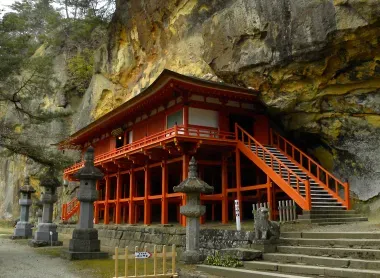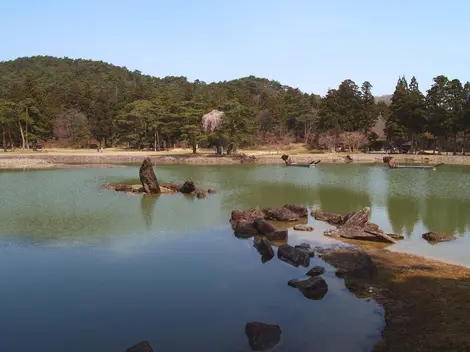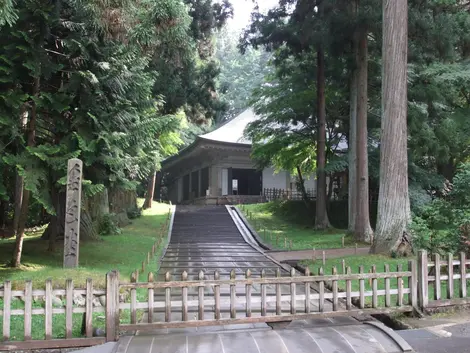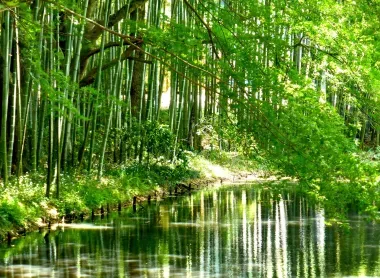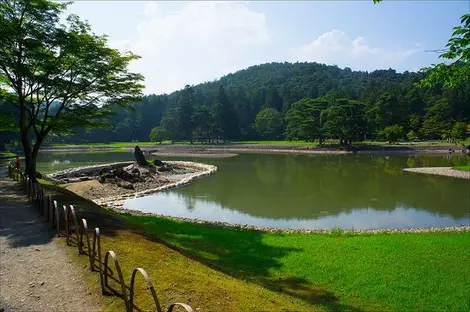Visit Hiraizumi 平泉
- Published on : 30/01/2018
- by : I.D.O.
- Youtube
The city of the "Pure Land"
A former prestigious city chosen in 1105 by the powerful Ôshu Fujiwara clan to establish its power in the north of the country, Hiraizumi was reduced to nothing in 1189 by Minamoto No Yoritomo, the founder of the Kamakura era (1185-1333). In 2011, the city took its revenge on history by becoming a UNESCO World Heritage Site.

In Chuson-ji Temple
Harry Lawford
Laville was founded according to the cosmology of Pure Land Buddhism, Jôdo , a Japanese Buddhist current which was formed in the 8th century. Temples, buildings and gardens represented the Pure Land of Buddha, in this world and in the hereafter.
Read: Buddhism in Japan
In the land of gold
- Chuson-ji Temple
Nestled in the heart of a forest, Chuson-ji, of the Buddhist Tendai sect, was founded in 850 by the Fujiwara clan. Of the forty buildings that made its splendour, only Konjikido and Kyozo have survived. The Konjikido , or golden pavilion, dates from 1124. In order to protect this edifice covered with gold inside and out, it was sheltered in a building. The Golden Pavilion is dedicated to Amitabha Buddha (Amida Nyorai in Japanese), the Buddha of Infinite Light. In the inner room ( naijin ) below the central altar, lie the remains of three great heads of the Fujiwara family, Kiyohira, Motohira and Hidehira. The Kyozo , or dessutra pavilion, was built in 1122 to house the texts of Buddhist prayers. If the building remained intact, the sutras are now kept in the museum of treasures, Sanzoko, which also houses magnificent Buddhist statues and objects that belonged to the Ôshû Fujiwara family. The temple area also houses a superb Noh stage located in the open air which was authentically rebuilt in 1853. Over a distance of approximately 1 km, various paths give access to the various buildings through the forest.
Access: 5 min by bus or 25 min on foot from Hiraizumi station.
Read also : Buddhist statuary in Japan
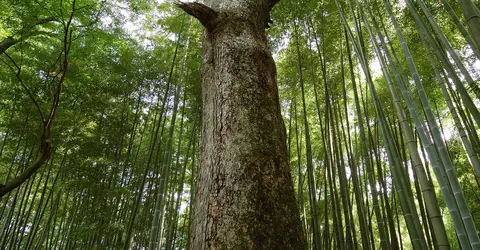
Chuson-ji Bamboo Grove
Rosino
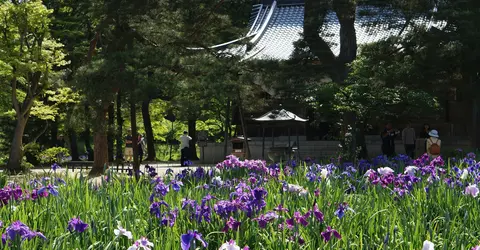
Motsû-ji Temple
yisris
Paradise on Earth
- Motsû-ji Temple
This temple founded in 850, its famous garden and the pond have been arranged to form a perfect whole supposed to symbolize paradise according to the concepts of Buddhism of the Pure Land. This kind of garden was very popular in the Heian era (794-1185) but that of Môtsû-ji is the only one that has survived until today. It is also the only period element of Môtsû-ji, all the buildings of the temple having burned down during conflicts or accidental fires.
The garden was built around a large pond, Oizumi ga ike , consisting of two islands and four peninsulas on its southern shores. On the northern part of the pond, are the ruins of a pavilion. The central island is in the shape of a comma. The shore, with its beach, peninsulas and rocks, is meant to represent sea coasts. It is a real treasure that has survived centuries and turmoil and its almost perfect preservation has contributed to Hiraizumi being listed as a UNESCO World Heritage Site.
See : Unesco sites in Okinawa
In addition to the garden, the walk in the domain of the temple also gives to see many vestiges attesting to its size and its past importance. The ephemeral glory of the site also inspired Matsuo Basho , a famous haiku poet who in 1689 wrote about Hiraizumi: "Three generations of glory have vanished in the space of a dream..."
Access: 7 min walk from Hiraizumi station.
The Japanese: a nation of warriors
Takkoku-no-Iwaya Bishamon-do Temple was partially built into the side of a cliff. It was built in the 9th century, at the beginning of the Heian era, to commemorate the victory of Japanese government forces over the indigenous tribe to the north, the Emishi. It is dedicated to the god of warriors: Bishamon . The temple has been burned down several times and the current building dates from 1961. It was copied from the Kiyomizu Temple in Kyoto. Only 33 of Bishamon's 108 statues remain and these are only shown to the public every 33 years. For those who have the patience to wait: the next exhibition will take place in 2043!
Near this site rises a huge rock on which is an engraving representing the Dainichi-Nyorai Buddha. This sculpture dates from the end of the 11th century.
Access: 15 min by taxi from Hiraizumi station.
Address, timetable & access
Address
Timetable
From Tokyo take the Tohoku Shinkansen to Ichinoseki station, change to Hiraizumi (7 to 9 min by JR Tohoku line) From Sendai: take the train at Sendai station (1h37 min to 1h49 min by JR Tohoku line ) to Hiraizumi.
